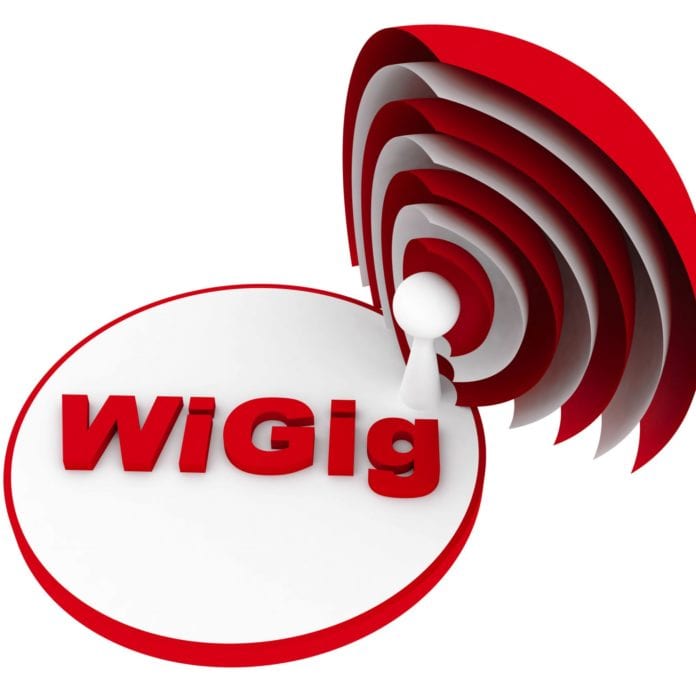Wi-Fi Alliance launches WiGig certification
The WiGig ecosystem should get a major kick-start with the launch of the Wi-Fi Alliance’s certification program for the technology, ensuring that WiGig products will be interoperable.
WiGig is based on the IEEE’s 802.11ad standard and operates at 60 gigahertz. It is expected to support speeds up to eight gigabits per second over distances up to 10 meters. Some of the expected use cases include wireless docking between devices; augmented and virtual reality, due to its low latency; support for very data-intensive video streaming and fast high-definition movie downloads; and other “wired-grade” types of speeds for indoor and line-of-sight wireless applications. There has been some early exploration of the technology for outdoor use as well – Facebook, for one, has been promoting WiGig through its Terragraph project, and said that “combined with Wi-Fi access points, Terragraph is one of the lowest-cost solutions to achieve 100 percent street-level coverage of gigabit Wi-Fi.”
“Users are placing more and more demand on … devices and specifically, demand around the connectivity as they consume more and more high-definition and rich content,” said Kevin Robinson, VP of marketing for Wi-Fi Alliance. “That places some big demands on connectivity.”
WiGig is seen as a complement to existing Wi-Fi technologies, according to Robinson. Some of its features include the use of beamforming to improve performance and mitigate interference and path loss and the use of wider channels at 60 GHz. Robinson said that WiGig also is likely to play an important role in service provider strategies; Google, for example, has talked about the possibility of using millimeter wave, gigabit-Wi-Fi for last-mile connectivity, and in 2017 AT&T plans to field-test its AirGig solution that relies on the use of mm wave Wi-Fi routers at the top of utility poles.
Analyst firm Mordor Research expects the global WiGig market to boom at a compound annual growth rate of more than 100% over the next few years to reach $23.29 billion by the end of 2021 – up from current estimates of about $300 million.
Phil Solis, research director at ABI Research, said in a statement that Wi-Fi Alliance certification programs have “a strong history of accelerating broad technology adoption across the industry, and we expect 2017 to be a breakout year for WiGig on the heels of Wi-Fi Certified program availability. The ecosystem for WiGig spans the mobile, PC and consumer electronics industries across the consumer, enterprise and service provider markets. Devices will leverage the brand and ubiquity of Wi-Fi for continued momentum across these industries.”
ABI Research predicts that 180 million WiGig chipsets for the smartphone market will ship in 2017, and that smartphone chipsets will make up almost half of the 1.5 billion total WiGig market shipments in 2021.
A number of products from early adopters already have been certified and comprise Wi-Fi Alliance’s test bed, including a reference design kit from Peraso, a Qualcomm 802.11ad client and router based on its QCA9500 chipset; Dell’s Latitude E7450/70; Socionext’s 802.11ad reference adapter and Intel’s Tri-Band Wireless solution.
“The Wi-Fi Certified WiGig launch is only the beginning, and you can expect future releases that will bring even more capabilities,” said Robinson.
Watch a Qualcomm demo of an 802.11ad solution below:
[embedyt] http://www.youtube.com/watch?v=clJo0dplT7A[/embedyt]
Image copyright: yuriy2design / 123RF Stock Photo

